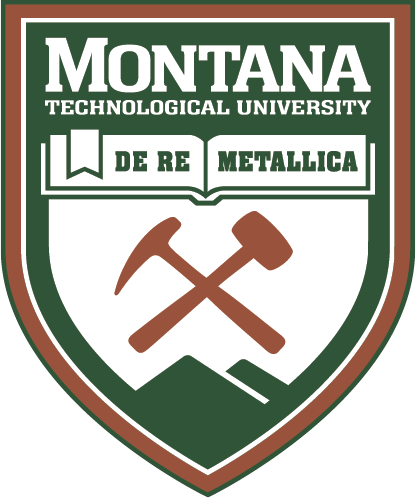Taking an Immersive Look at the Impact of RING-UIM Proteins on Cellular Processes
Joel Graff | Montana Technological University
jgraff@mtech.edu
Project Summary

Toward accomplishing the Montana INBRE aim of developing a pipeline of students for careers in health research, our laboratory has prepared students over the past five years for immediate entry into the workforce as laboratory technicians and for attending post-secondary schools, which include graduate, medical, MD/PhD, and physician assistant programs. We have worked toward this goal by creating a workflow encompassing myriad techniques for characterizing proteins hypothesized to be involved in cellular processes associated with viral replication. More specifically, our research program has focused on two protein families, TRIM and RING-UIM, whose members have a “really interesting new gene” (RING) domain, which is commonly found in ubiquitin ligases. As there are over 100,000 documented ubiquitination sites on human proteins and only around 600 ubiquitin ligase proteins, each enzyme is expected to target multiple substrates. Additionally, members of both TRIM and RING-UIM protein families have been recognized to act as selective autophagy receptors and it is unknown how many proteins are targeted for degradation by each receptor via this major catabolic pathway. There is a large knowledge gap left for identifying and verifying the full complement of substrates targeted for ubiquitination and autophagy, the two major degradative pathways in cells. Because post-translational modification of proteins by ubiquitination regulates nearly all cellular processes, defining the full complement of substrates targeted by each ubiquitin ligase is essential for understanding cellular biology.
The use of a wide range of techniques to better understand RING protein impact on cells is an apt setting for the long-term goal of our research program, which is to provide undergraduate students with a high-quality, well-rounded molecular biology research skillset. The overall objective for the research proposed in this application fits into this long-term goal by narrowing our scope to just the four-member RING-UIM protein family before expanding back out to the larger TRIM protein family in an R15 application. This narrow focus will allow our students to test the hypothesis that the RING-UIM proteins impact a variety of cellular processes related to viral replication by interacting 1) with substrates targeted for degradation as well as 2) with additional proteins that cooperate in substrate targeting. Our proposed research approach to better understand the RING-UIM proteins includes extensive use of Montana Tech’s super resolution confocal microscope and, to evaluate the large volume of expected three-dimensional data, we will use virtual reality-based software and hardware tools.
Project Aims
- Expand and confirm the known interactome for all four members of the RING-UIM protein family. RING-UIM proteins have RING, zinc-finger, and ubiquitin-interacting motifs. Together, these motifs are expected to allow the RING-UIM proteins to interact with substrates, “E2” ubiquitin conjugating enzymes, additional “E3” ubiquitin ligases, and ubiquitin chains on ubiquitinated proteins. This aim will test the hypothesis that RING-UIM proteins seed multi-protein complexes and our approach includes the use of yeast two-hybrid, microscopy, and biochemical-based techniques. Because our laboratory is interested in antiviral immunity, we will prioritize further analysis for proteins that are relevant to viral replication.
- Define cellular processes related to viral replication cycles that are impacted by RING-UIM proteins. In contrast to the first aim, which seeks to define targets of RING-UIM proteins and then understand the impact on the cell, this aim seeks to define cellular processes that are impacted by RING-UIM proteins and to eventually narrow down the point in the process that is specifically targeted. Our working hypothesis for this aim is that because each RING-UIM protein likely has multiple targets, each RING-UIM protein will likely impact multiple cellular processes.
- Comparison of digital image analysis tools including the use of virtual reality-based approaches for confocal microscopy three-dimensional data. The heavy use of microscopy for collecting two- and three-dimensional fluorescence image data in this proposal warrants an emphasis on appropriate data analysis. The hypothesis of this aim is that undergraduate students will find approaches using virtual reality-based image analysis to be more intuitive and productive than conventional keyboard- and mouse-based data interactions. Evaluating the various approaches will be empirically determined in this study but may lead to follow up studies.

